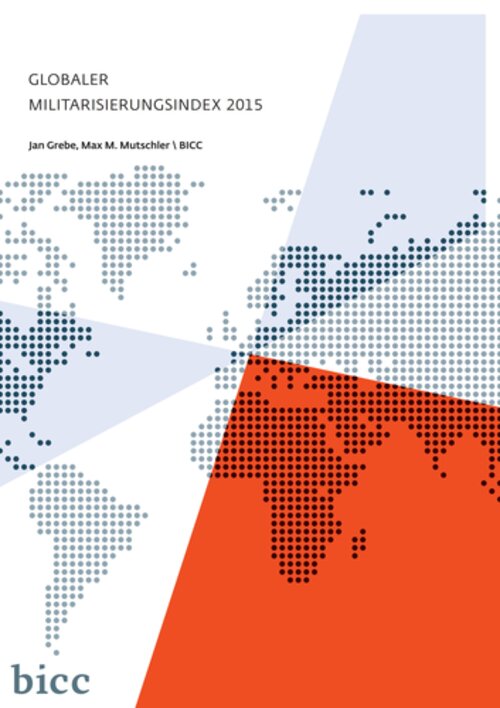Publications
Global Militarisation Index 2015
Release Date
2015-11
Language
- German
- English
Topics
- –
Compiled by bicc, the Global Militarisation Index (GMI) presents on an annual basis the relative weight and importance of a country's military apparatus in relation to its society as a whole. The 2015 GMI covers 152 states and is based on the latest available figures (in most cases data for 2014). The index project is financially supported by Germany's Federal Ministry for Economic Cooperation and Development (BMZ).
There are numerous sources of conflict around the world that are driving militarisation in many regions and inducing states to modernise their armed forces or increase defence budgets. Among the ten countries with the highest level of militarisation—namely Israel, Singapore, Armenia, Jordan, South Korea, Russia, Cyprus, Azerbaijan, Kuwait and Greece—three are in the Middle East, two in Asia and five in Europe.
The United States and China are absent from the GMI Top 10, despite being global leaders in military spending. This is because when their military expenditures are measured as a proportion of gross domestic product (GDP) and their military headcount and heavy weapon system numbers are measured per 1,000 inhabitants, the situation looks rather different. It should be noted, though, that these two powers are following the widespread trend towards restructuring and modernisation of the armed forces.
The region with the highest level of militarisation is again the Middle East. This upward trend must be seen in connection with the violent conflicts across the region—the Israeli–Palestinian conflict, the war in Yemen, the civil war in Syria, and the regional threat posed by the so-called Islamic State (IS).
In Europe, too, we find high levels of militarisation. Current crises, not least the war in eastern Ukraine, could become the factor that will push up defence budgets going forward. There is also a local arms race between Armenia and Azerbaijan triggered by the Nagorno–Karabakh conflict.
Included for the first time in the 2015 GMI report is an examination of the relationships between militarisation and human development by considering the Human Development Index (HDI). For stronger economies, we find that a high GMI ranking is often accompanied by a high HDI value (Israel, Singapore). And at the opposite end of the spectrum there are cases such as Liberia and Sierra Leone where we have to ask whether the low levels of militarisation might be adversely affecting human development. The relationship between militarisation and human development may again differ in countries where a high GMI is combined with a low HDI, such as Chad, or Mauretania. Here, disproportionately high spending on the armed forces may be taking critical resources away from development.
PDF-Download

PDF-Download

Cite as
Document-Type
BICC Global Militarization Index
Publisher
bicc
Place
Bonn



